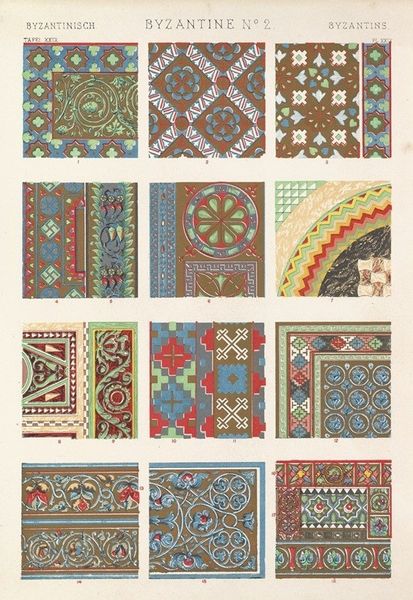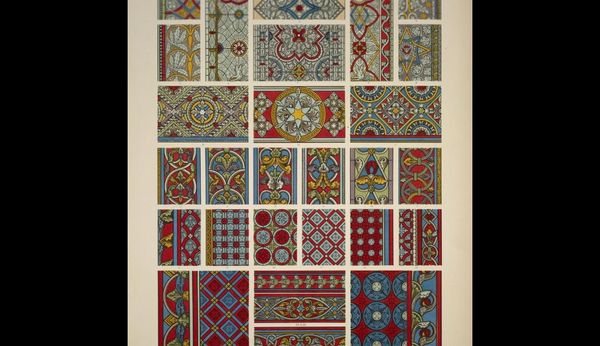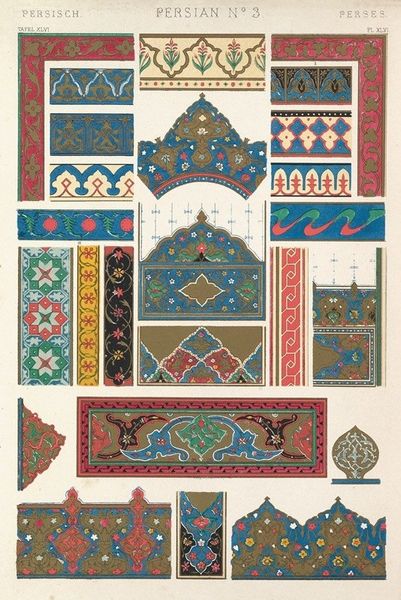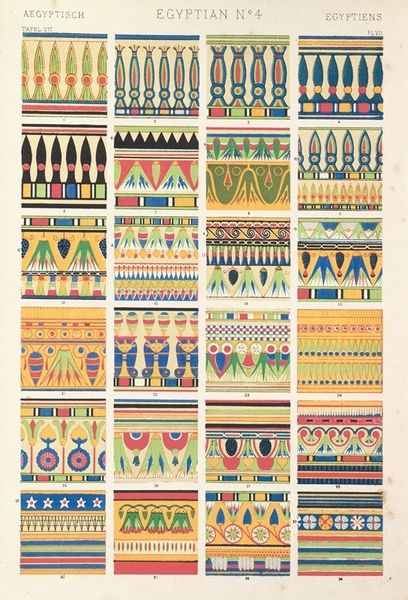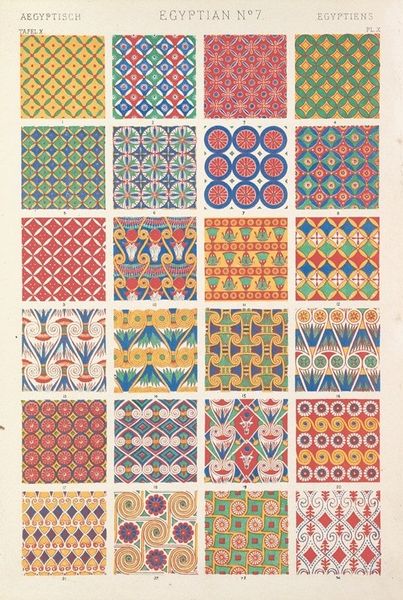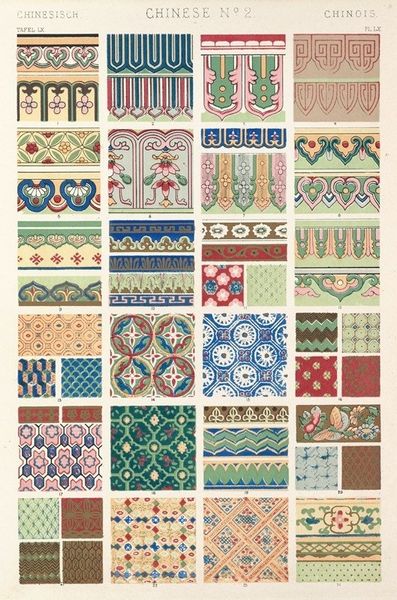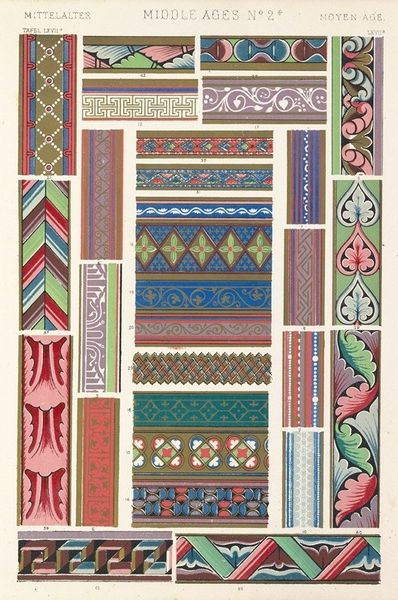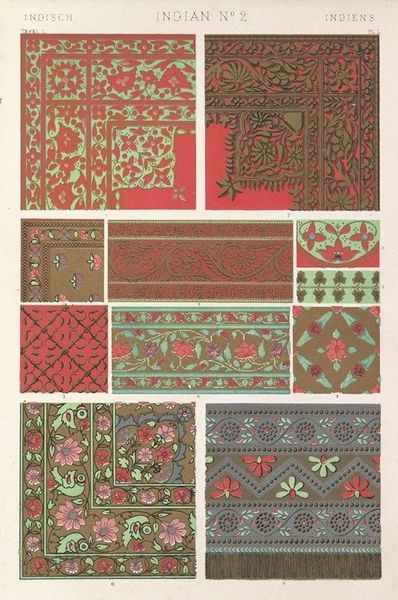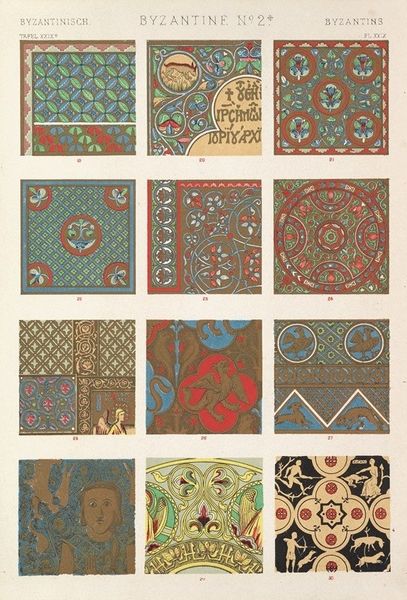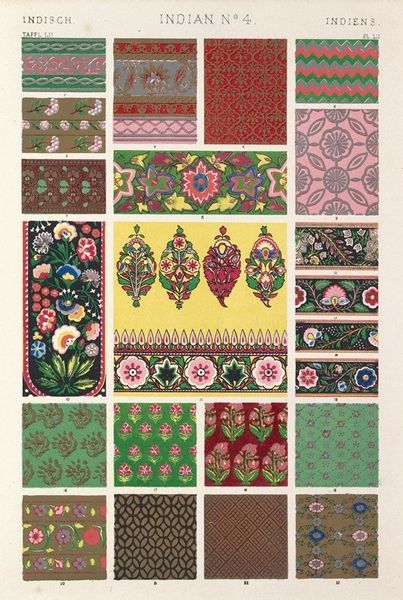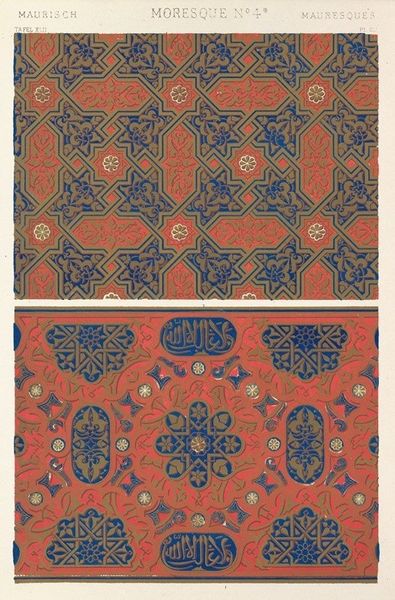
graphic-art, print
#
pattern heavy
#
graphic-art
# print
#
pattern
#
fashion and textile design
#
pattern design
#
repetition of pattern
#
vertical pattern
#
pattern repetition
#
islamic-art
#
textile design
#
decorative-art
#
imprinted textile
#
layered pattern
#
combined pattern
Copyright: Public Domain: Artvee
Curator: This print, simply titled "Stained Glass 2," comes to us from Owen Jones, dating back to 1856. What strikes you about this particular design? Editor: I'm immediately drawn to how structured yet ornate it feels. There’s a vibrancy that hints at stained glass's inherent light-altering nature, almost a yearning for illumination within structured confines. Curator: Absolutely, Jones was deeply invested in decorative principles, particularly how historical styles, especially Islamic art, could inform contemporary design. His book, "The Grammar of Ornament," became a hugely influential sourcebook of design motifs. Do you see evidence of this in these examples? Editor: I see a dialogue happening between cultures through pattern and symbol. The repetition feels almost like a meditation, nodding to the Islamic tradition, but then there's this overlay of what seems like gothic or medieval European influences, especially in those fleur-de-lis style shapes. This piece shows us how cultural exchange shapes visual language. I wonder, for whom were these designs intended, and how were they received? Curator: Owen Jones aimed for accessibility and the reform of industrial design. These designs were not just meant for the elite, but as accessible patterns and models applicable to everyday objects. So the social impact of these models was an active concern during their creation and distribution. He truly wanted good design to permeate all aspects of life. The layers and colors themselves could evoke many emotions from a person viewing them; he made the shapes bold for visibility from great distances. Editor: I notice also how some of these motifs might resonate differently today. In some of the details I am reminded of heraldry and other kinds of iconography associated with the aristocracy. Curator: Indeed, and considering that Jones created "The Grammar of Ornament" as something of a reaction against the perceived decline of design standards in the Industrial Revolution, it underscores the importance of considering context in interpreting symbolism. Editor: It is true; thinking about the Victorian era's complicated relationship with ornamentation and industrialization, this becomes much more complex. It reminds us that aesthetics always intertwine with the social fabric. Curator: Seeing the visual through social context provides a deep understanding of what imagery and symbol represents across multiple dimensions. I’m thankful we could touch upon all these aspects today! Editor: Agreed. Looking at patterns like these gives us a blueprint of the historical movements of aesthetics, of tradition meeting modern life. It challenges us to find beauty in structure while demanding to think critically about what and whom that structure ultimately serves.
Comments
No comments
Be the first to comment and join the conversation on the ultimate creative platform.

